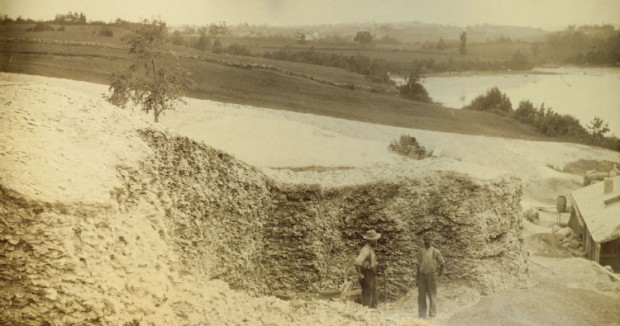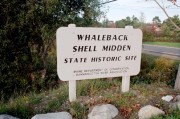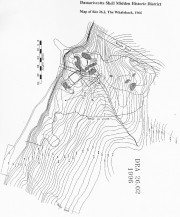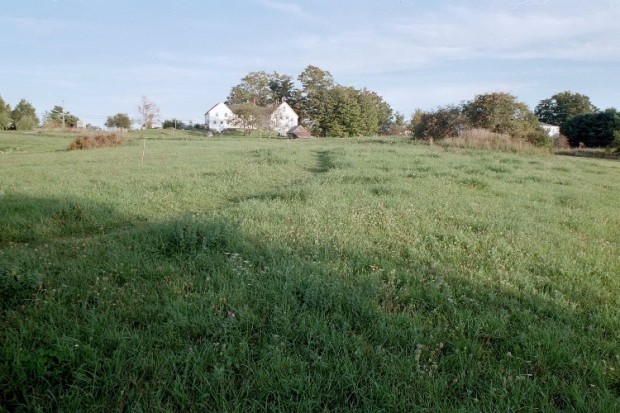Damariscotta Shell Midden (1886)
Shell middens or shell heaps, are scattered along the Maine coast giving evidence of the lifestyles of its ancient inhabitants. A “midden” is a refuse heap, or less delicately – a dump.
Whaleback Shell Midden sign While they are found all over the world – from Denmark to Japan, Florida to British Columbia – the Damariscotta Oyster Shell Heaps are among the largest and have been of interest to scholars since the 19th century. Now protected by the Maine Department of Conservation, which provides educational material at the site, it was once the focus of a local industry.
The Whaleback shell midden, as the Damariscotta heap on the east bank of the Damariscotta River is known, was one of the largest on the east coast of the United States before it was mined. It extends back from the river along a stream, possibly because it was convenient to move upstream as the shell heaps grew deeper along the river. The elongated higher ridge of shells suggested the name.
Thousands of years old, the heaps were begun at least 2,200 year ago and contain ceramic materials (pottery) from the earliest period. Since no European artifacts have been found in the midden, its formation apparently ceased well before they arrived.
Europeans were introduced to the middens in the early 1600’s as explorers, such as George Weymouth and Sir Fernando Gorges, were invited to the home of the Wawenock Indians near the site. Later European settlers removed great quantities of the shells for road construction and other purposes, but made only a slight dent in the estimated 5 million cubic feet of material.
In 1886, a commercial venture built a large factory to convert the shells into lime. Professor F. W. Putnam of the Peabody Museum in Cambridge, Massachusetts arranged for careful measurements and accounting to be made documenting the contents of the heap. He hired Abram Tarr Gamage of Damariscotta to record the information. Gamage also took these photos of the project.
The heaps were placed on the Register of Historic Places in 1969. In 1998 the Damariscotta Shell Midden Historic District was added to the Register.
Whaleback Midden Area (2002)
Additional resources
Castner, Harold W. The Prehistoric Oyster Shell Heaps of the Damariscotta River. Waldoboro, Me. Waldoboro Press. 1950. (Fourth edition 1963.)
Bourque, Bruce J. “Maine Shell Midden Archaeology (1860-1910) and the Influence of Adolphe von Morlot.” New Perspectives on the Origins of Americanist Archaeology. David L. Browman and Stephen Williams, eds. Tuscaloosa: University of Alabama Press. 2002.
Speiss, Arthur. “Damariscotta Shell Midden Historic District.” National Register of Historic Places documentation. Augusta: Maine Historic Preservation Commission. 1998. (Source of map and survey at left.)







I recently went to the Shell midden and noticed that there appeared to be a shell midden on the opposite of the river alongside RT 1